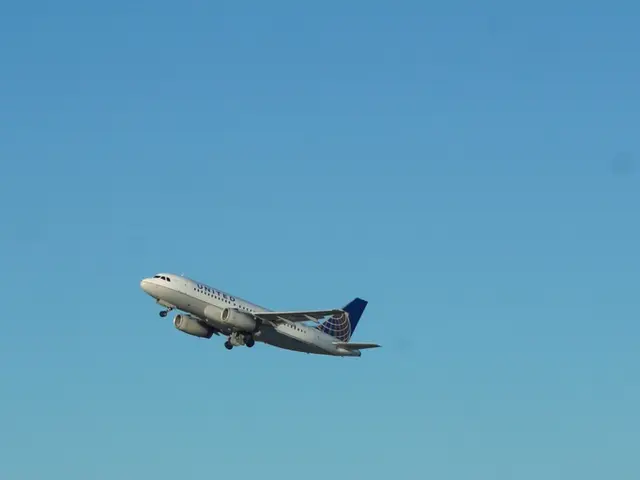Aircraft Orientation: Analysis of Attack Angle and Chord Line
Flying High: An In-depth Look at Angle of Attack and Chord Line
Got your eyes on the wild blue yonder? Diving deep into the technical ins and outs of aviation is a fantastic way to understand the science behind flying! This guide focuses on two core aerodynamic facets that every aviation enthusiast or aspiring pilot must grasp - angle of attack (AOA) and the chord line. These concepts play a pivotal role in how aircraft generate lift, maintain stability, and navigate various flight conditions. So buckle up, and let's dive right in!
So, what exactly is AOA?
Simply put, AOA refers to the angle at which the chord of an aircraft’s wing meets the relative wind. Essentially, it indicates the degree to which the wing is tilted with respect to the incoming airflow.
How AOA Affects Flight
The key to a plane soaring through the skies? Its wings must be angled with the airflow, not positioned flat against the ground. In layman's terms, aircraft fly by tilting their wings relative to the wind.
A big AOA typically means more lifting force, which is crucial for maintaining flight or ascending. However, tread carefully! If AOA becomes excessively large, stalls will occur, and the plane will lose its lift[1].
Wings have a specific structural AOA, even when the plane appears to be flying straight and level.
Evaluating the Chord Line
The chord line is an essential reference point for studying the airflow around the wing. It lets us determine the airplane's aerodynamic center and effectively analyze the aircraft's behavior[2].
Putting It All Together: AOA and Chord Line in Action
Mastering these principles is vital for pilots and aviation enthusiasts alike to fly safely and efficiently. By understanding how AOA influences lift generation, stability, and control, you'll enrich your aviation knowledge and be better prepared for any challenge that comes your way.
Looking for more in-depth aerodynamics and flight principles? Check out our varied resources at our website. Stay informed, fly smarter, and keep safety your top priority!
Boosting Aerodynamic Knowledge
Want to know more about the impact of AOA on aircraft performance? Here's the scoop:
- Lift Generation: Increased AOA generally results in more lift, which is crucial for maintaining flight or climbing[3]. However, pushing the boundaries too much can lead to stalls[1], where the wing’s lift suddenly plummets.
- Stability and Control: AOA plays a significant role in aircraft stability and control. Optimal AOA ensures stable flight and responsive control[3]. On the flip side, excessive AOA brings about instability and increases the risk of stalls[1].
- Airspeed and Efficiency: AOA determines an aircraft's airspeed and air density in subsonic flight. In supersonic flight, AOA’s role becomes more complex, involving compression effects and the need for specialized wing designs[3].
- Aviation enthusiasts and aspiring pilots should grasp angle of attack (AOA) and chord line, as they are fundamental aerodynamic aspects critical to understanding how aircraft generate lift, maintain stability, and navigate various flight conditions.
- The aerospace industry and finance sectors keep a keen eye on AOA and the behavior of chord lines, as they significantly impact an aircraft's performance, such as its lift generation, stability, and airspeed, ultimately influencing transportation efficiency and safety.
- Learning more aerodynamic principles, including AOA and the chord line, can help aviation enthusiasts delve deeper into the fascinating world of aviation, enabling them to appreciate the science behind flying and make informed decisions that prioritize safety in any circumstances.








